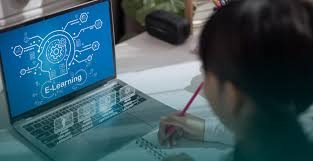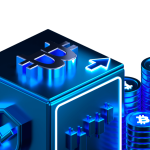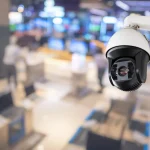Introduction
The landscape of education continues to undergo profound transformation through the integration and advancement of tech solutions designed specifically for learning environments. As we move further into the digital age, emerging technologies are reshaping traditional educational paradigms, offering unprecedented opportunities to enhance learning experiences, improve accessibility, and personalize instruction. The rapid pace of technological innovation promises to address longstanding challenges in education while simultaneously creating new possibilities that were previously unimaginable. Understanding these emerging trends is crucial for educational institutions, policymakers, and stakeholders who aim to prepare learners for an increasingly complex and technology-driven world.
The Evolving Educational Technology Ecosystem
The educational technology ecosystem has expanded dramatically over the past decade, evolving from simple digital replacements of traditional tools to sophisticated systems that fundamentally transform teaching and learning processes. This evolution reflects both technological advancements and deepening understanding of how technology can most effectively support educational objectives. Rather than viewing educational technology as merely supplementary, forward-thinking institutions are recognizing its potential as a central component of comprehensive educational strategies.
Within this evolving ecosystem, the role of teachers remains essential but is being redefined. Far from being replaced by technology, educators are becoming more important than ever as they guide students through complex digital learning environments, helping them develop critical thinking skills and digital literacy. The most successful educational technology implementations recognize this crucial role, designing solutions that empower teachers rather than attempting to automate their expertise. This human-centered approach ensures that technology serves educational goals rather than dictating them.
Emerging Technologies Transforming Education
Artificial Intelligence and Machine Learning
Artificial intelligence and machine learning technologies are perhaps the most transformative forces in educational technology today. These technologies enable unprecedented levels of personalization by analyzing vast amounts of data to identify individual learning patterns and needs. AI-powered tutoring systems can provide customized instruction and feedback at scale, adapting in real-time to student responses and learning progress. These capabilities are particularly valuable for addressing the diverse needs present in any classroom, allowing each student to progress at an appropriate pace.
Beyond personalization, AI applications in education include intelligent content creation tools that can generate customized learning materials, automated assessment systems that provide immediate feedback while freeing teacher time for more complex instructional tasks, and predictive analytics that identify students at risk of falling behind before traditional assessments would reveal concerns. As these technologies continue to mature, their integration into educational environments will likely become increasingly seamless and comprehensive.
Virtual, Augmented, and Mixed Reality
Immersive technologies are revolutionizing how students engage with complex concepts across disciplines. Virtual reality (VR) transports learners to environments otherwise inaccessible—from historical settings to microscopic cellular structures—creating experiential learning opportunities that significantly enhance comprehension and retention. Augmented reality (AR) overlays digital information onto the physical world, allowing students to explore interactive 3D models or visualize abstract concepts in tangible ways. Mixed reality (MR) combines elements of both, creating highly interactive learning experiences that blend physical and digital elements.
These immersive technologies are particularly valuable for subjects requiring spatial understanding or procedural knowledge, such as anatomy, architecture, or complex scientific processes. They also offer powerful opportunities for developing empathy through perspective-taking experiences and creating safe spaces to practice skills that would be dangerous or impractical in real-world settings. As hardware becomes more affordable and content libraries expand, these technologies will likely become standard components of educational environments across grade levels and subject areas.
Blockchain in Education
Blockchain technology, while still emerging in educational contexts, holds significant potential for addressing challenges related to credential verification, intellectual property management, and educational record-keeping. By creating immutable, transparent records of educational achievements, blockchain systems can establish more reliable credential verification processes that reduce fraud while giving learners greater control over their educational data. These systems could eventually transform how educational qualifications are documented, shared, and verified globally.
Additionally, blockchain applications may facilitate new models of content creation and sharing among educators, enabling more efficient collaboration while ensuring appropriate attribution and compensation for intellectual contributions. Early implementations of blockchain in education demonstrate promising results, suggesting that this technology will play an increasingly important role in educational ecosystems as implementation challenges are addressed.
Internet of Things (IoT)
The proliferation of connected devices is creating new possibilities for data collection and environmental optimization in educational settings. IoT applications range from smart classroom environments that automatically adjust lighting and temperature for optimal learning conditions to wearable devices that track student engagement and physiological responses during learning activities. These connected systems generate rich data that can inform instructional decisions and provide insights into how physical environments impact learning outcomes.
IoT technologies also enable more sophisticated remote and hybrid learning models by connecting physical classroom components with distributed learners. As these technologies become more affordable and user-friendly, they will likely be integrated into educational environments at all levels, creating more responsive, data-informed learning spaces that adapt to learner needs in real-time.
Transforming Educational Models
Microlearning and Modular Content
Traditional educational models organized around semester-long courses are increasingly being complemented by microlearning approaches that break content into smaller, focused units. This modular approach allows for greater flexibility in how and when learning occurs, enabling students to access specific content as needed rather than following rigid sequential structures. Digital credentials associated with these smaller learning units create more granular documentation of skills and knowledge, potentially offering employers more precise information about candidate capabilities.
These modular approaches are particularly well-suited to just-in-time learning needs and continuous professional development contexts. As educational institutions and employers recognize the value of ongoing skill development throughout careers, microlearning models will likely become increasingly prominent components of lifelong learning ecosystems. The technology supporting these approaches continues to evolve, creating more seamless experiences for learners navigating modular content.
Adaptive Learning Environments
Advanced adaptive learning systems are moving beyond simple branching pathways to create truly personalized learning experiences based on comprehensive learner profiles. These systems continually adjust content difficulty, presentation methods, and pacing based on individual performance data, learning preferences, and educational goals. By providing the right challenge at the right time for each learner, adaptive environments maximize engagement and minimize both frustration and boredom.
The sophistication of these systems continues to increase as they incorporate more diverse data sources and more complex algorithms for determining optimal learning pathways. While early adaptive systems focused primarily on content mastery, emerging approaches are incorporating broader considerations including motivation, metacognitive development, and learning transfer. These holistic adaptive environments represent a significant advancement over traditional one-size-fits-all instructional approaches.
Gamification and Game-Based Learning
Educational applications of game mechanics and game-based learning continue to evolve beyond simple point systems to create deeply engaging learning experiences. Advanced gamification approaches incorporate narrative elements, meaningful choices, and social components that leverage intrinsic motivation rather than relying solely on extrinsic rewards. These approaches are particularly effective for developing persistence through challenges and fostering a growth mindset among learners.
Game-based learning environments create authentic contexts for applying knowledge and skills, allowing learners to experience consequences of decisions in low-stakes environments before transferring learning to real-world situations. As understanding of effective game design principles deepens and development tools become more accessible, educators will have increasing opportunities to incorporate these engaging approaches into diverse learning contexts.
Challenges and Considerations
Equity and Access
As educational technology becomes increasingly central to learning experiences, ensuring equitable access becomes correspondingly critical. The digital divide persists both in terms of basic technology access and in the quality and reliability of that access. Educational institutions and policymakers must address these disparities through strategic investment in infrastructure, device provision programs, and support systems that ensure all learners can benefit from technological advancements regardless of socioeconomic factors.
Beyond physical access, digital equity also encompasses considerations of content accessibility for learners with disabilities, language accessibility for multilingual populations, and cultural relevance for diverse communities. Truly inclusive educational technology requires attention to these dimensions throughout the design and implementation process, ensuring that innovation benefits all learners rather than exacerbating existing inequities.
Data Privacy and Security
The increasing collection and utilization of learner data raises significant privacy and security concerns that must be addressed through robust policies and systems. Educational institutions must balance the benefits of data-informed instruction with the responsibility to protect sensitive information about learners. This balance requires careful consideration of what data is collected, how it is stored, who can access it, and how long it is retained.
Transparent communication with stakeholders about data practices is essential for maintaining trust in educational technology systems. As regulatory frameworks around data privacy continue to evolve, educational institutions must remain vigilant about compliance while advocating for approaches that protect learner privacy without unnecessarily constraining beneficial uses of educational data.
Sustainable Implementation
The educational technology landscape is characterized by rapid change and frequent emergence of new tools and platforms. This dynamism creates challenges for educational institutions attempting to implement sustainable technology strategies. Effective approaches balance innovation with stability, establishing core technological infrastructure while maintaining flexibility to incorporate valuable new developments. This balance requires thoughtful evaluation processes that assess new technologies based on educational value rather than novelty alone.
Sustainable implementation also depends on comprehensive support systems including technical infrastructure, professional development, and ongoing maintenance resources. Educational institutions must consider total cost of ownership beyond initial purchase prices, recognizing that successful technology integration requires sustained investment over time. Strategic planning that aligns technology initiatives with broader educational goals creates more sustainable implementation approaches.
Conclusion
The future of educational technology promises transformative possibilities for learning at all levels, from early childhood education through lifelong professional development. Emerging technologies like artificial intelligence, immersive reality, blockchain, and IoT are creating unprecedented opportunities to personalize learning experiences, enhance engagement, and develop complex skills needed for an increasingly digital world. As these technologies mature and converge, their combined impact on educational environments will likely exceed what we can currently envision.
Realizing the full potential of these technological advancements requires thoughtful implementation approaches that prioritize educational objectives over technological capabilities. The most successful educational technology initiatives will be those that maintain focus on fundamental learning principles while leveraging innovative tools to address longstanding challenges in education. By balancing innovation with evidence-based practices and attending to critical considerations of equity, privacy, and sustainability, educational institutions can harness technological advancements to create more effective, engaging, and inclusive learning experiences for all students.









